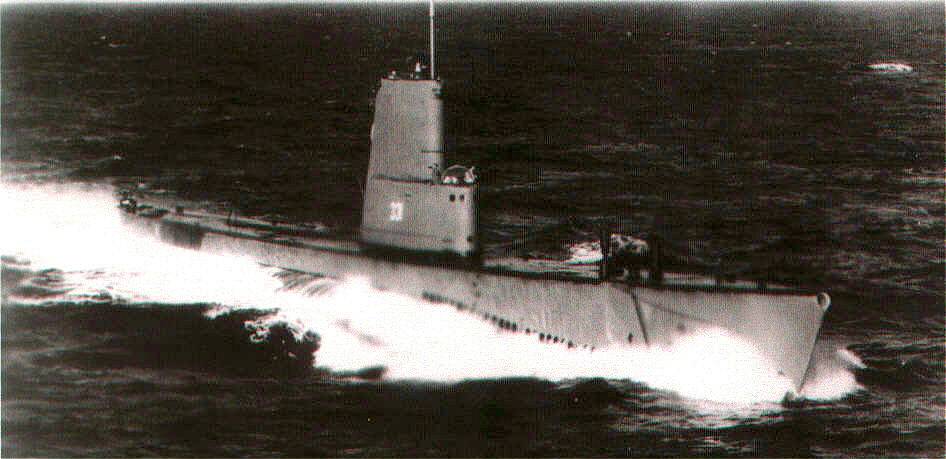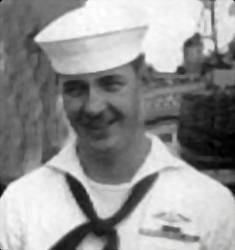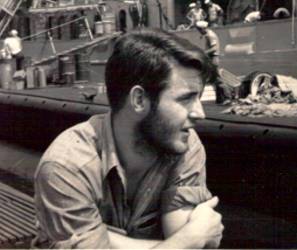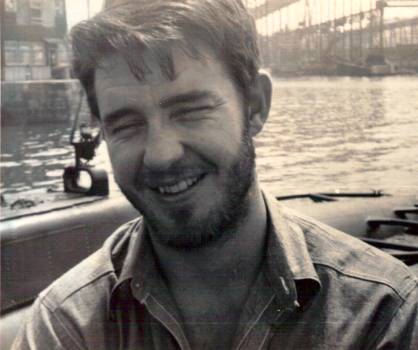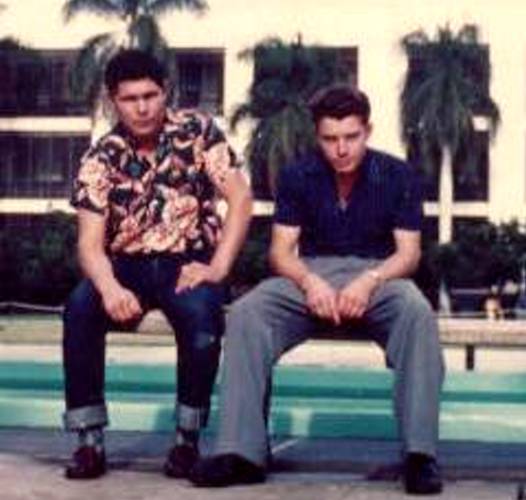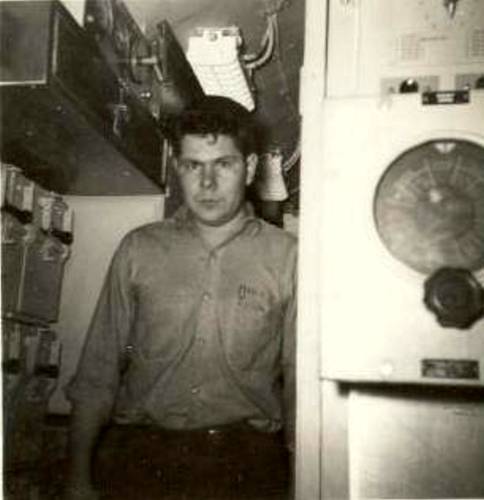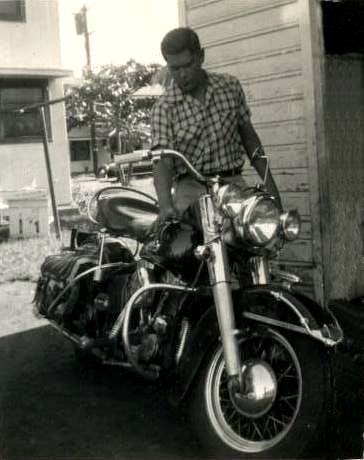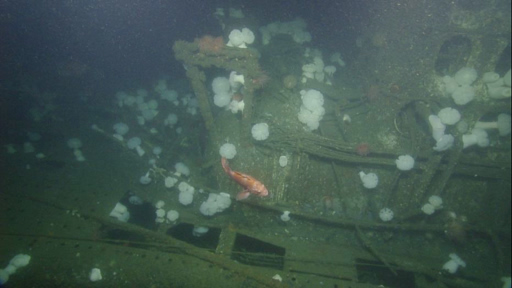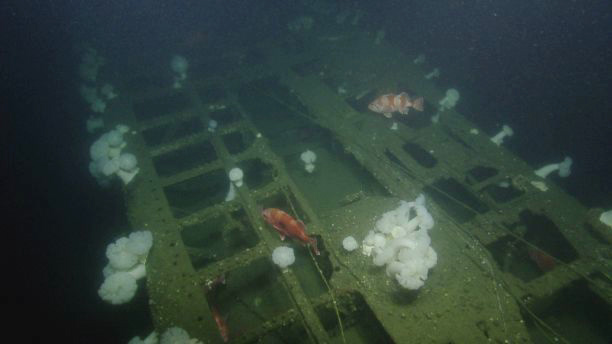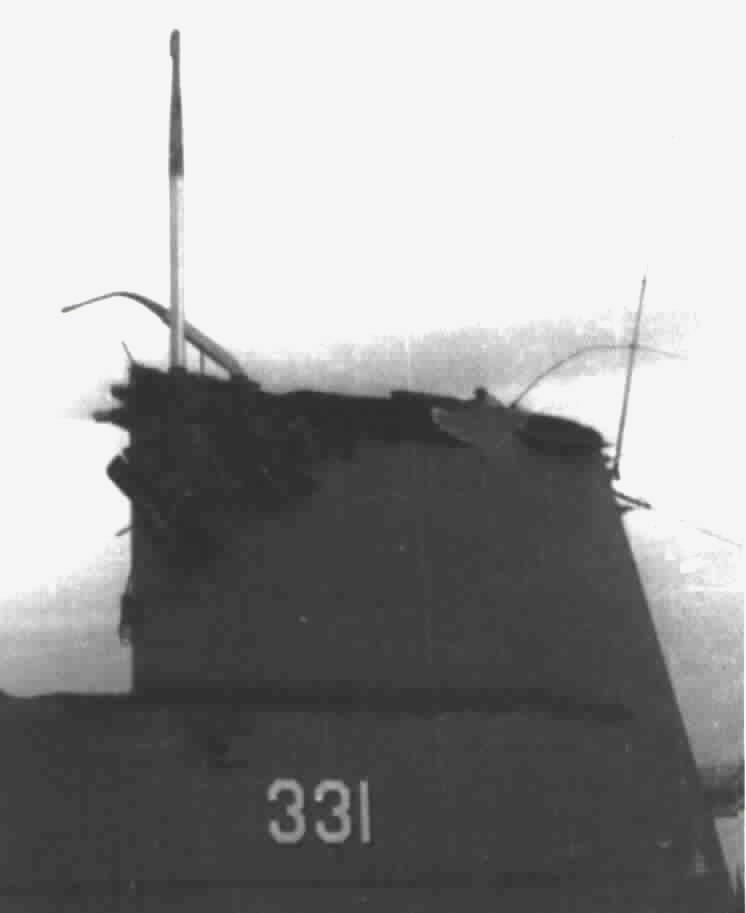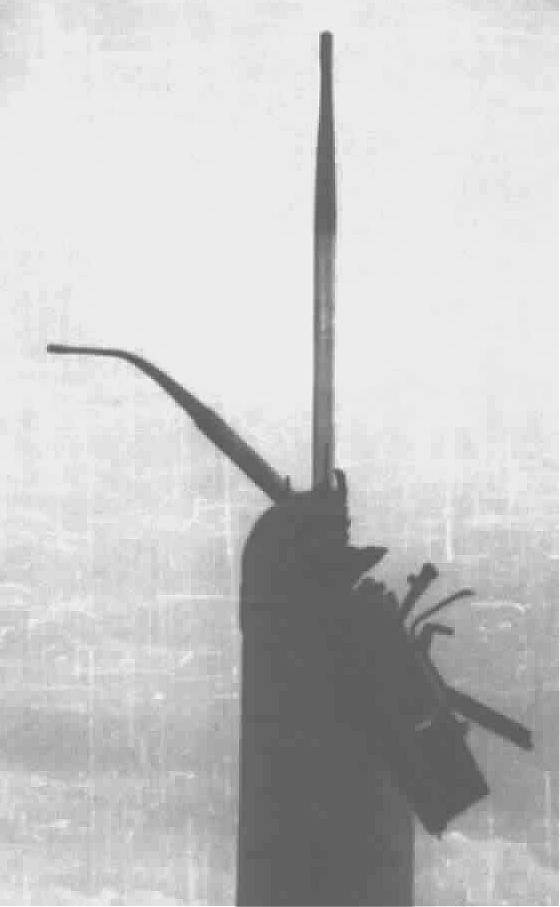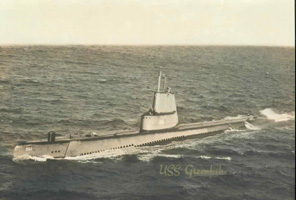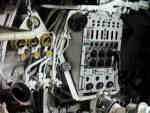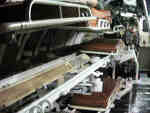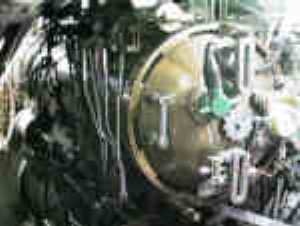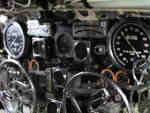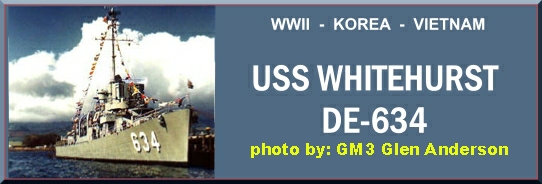
USS Whitehurst Logo by: Pat Stephens, Webmaster, DESA
|
This story has been reconstructed from memory by the following veterans. Rod Storz, Bill Chung, Roger Ekman, Russell Thomas, Phillip Chantz, Robert Carter, Henry Bohm, and Max Crow of the Whitehurst crew with help from Jerry Talbert, Randolph Bruner, and Richard "Rick" Farris of the Bugara. Rick provided the Bugara photos. 12 January 2005, Richard Farris
embarked on his final voyage. Although he was known as "Rick" to
his shipmates, in later years he was more often called "Dick".
His assistance on this article is greatly appreciated. The story wouldn't
be complete without it. mc. |
|
The Bugara Incident |
|
|
|
|
|
USS Bugara SS-331 |
|
| Original Specifications: Displacement 1526 tons (surface), 2391 tons (subm.), Length 311'8" Beam . 27', Draft 16'10" mean, Speed 20.25 Knots (surface), 8.75 Knots (subm.) Armament 1 3"/50 gun and 6 21" torpedoes forward, 4 21" torpedoes aft. Complement 6 officers and 60 enlisted men, Class Balao | |
|
Collision! |
|
|
The year was 1952. The USS Bugara SS-331 and the USS Greenfish SS-351, were participating in
Antisubmarine Warfare (ASW) training exercises in the waters not far from Pearl Harbor, Hawaii. The USS Whitehurst DE-634 and USS Silverstein DE-534 left Pearl Harbor early in the morning and quickly
"acquired" the submarines. During this day's exercises, Whitehurst was escorting and protecting the Silverstein which also served as observer of the operations. It was Whitehurst's job to keep the submarines from carrying out a successful attack on Silverstein. The weather was clear and bright, with light seas and very little breeze. The Sonarmen, Radarmen, Radiomen, Operations Officers, Engine Room, Pilot House, and Boiler room crews had been at General Quarters several hours when the incident occurred. The Combat Information Center (CIC) was manned by Operations Officer, LTJG Mel Cook, CIC Officer Ens Roger Ekman, Radarman 3/c Rod Storz, and Sonarman 3/c Bill Chung on the Sonar repeater. SO 3/c Phillip Chantz was in the Sonar Shack manning the tracking gear. EM2 Russell Thomas was on the throttles in the after Engine Room. LCDR Marvin D. Jones, Commanding Officer, was on the Bridge. Addison "Mississip" Harris was a bridge lookout. Sonarman Charles Robb was serving as observer aboard the Bugara. By mid afternoon the intensity of the exercises had taxed everyone. Whitehurst would make a run on one sub and then the other, while trying to keep both subs too off balance to complete a successful torpedo attack. There was noisy underwater turbulence from the activity, making it very difficult to locate either sub on the sonar repeater. When the last run prior to the collision was complete, CIC Officer Ekman left for a much needed break. Bill Chung could no longer find the second sub on the CIC repeater. Captain Jones decided to double back on Bugara (he knew where it was) while sonar searched for the other.
Memories of Henry V Bohm who was an LTJG at the time. note: Roger Ekman
recalls that Lt. Cook left the ship in late 1952. I have changed the first
sentence of this story to read. "The year was 1952" mc/webmaster 10 Mar.
2009 |
|
|
Collision as
observed by, Bugara Veteran, Jerry Talbert |
|
|
|
|
|
|
|
|
I was a Seaman 1st stationed at the stern planes which controlled the Collision as observed by, Bugara Veteran, Randolph Bruner I was a crew member on the USS Bugara SS-331. We were on an ASW with USS Whitehurst DD. At that time, I was an auxiliary electrician and had just taken readings on the pilot cells in the after battery. I had just made it into the crew's mess and headed back to the control room when the collision alarm sounded and the water tight doors were shut. We were in a collision and were heading down fast. Jerry Talbert told me that he was on the stern planes. He had lost his bubble. While in the crew's mess, I heard a shipmate utter, "I'm getting out of here!" He made a mad dash for the after battery ladder. We pounced on him with a toe hold, ankle hold, leg hold, and body clamps. Even if he had arms like Popeye, he wouldn't have been able to open the hatch. 44.4 applies here. Everybody in my compartment was very quiet. We headed for the Deep Six. Sharp submariners like Jerry Talbert were able to control the boat. We finally surfaced. This was one day that "The Creator" was looking out for all of us, and we never met Davy Jones. Many years later I thanked him. This is wisdom. I think of the other boats that were lost: the USS Thresher, the Kursk, and the USS Stickleback. I was then headed for the Philadelphia Navy Yard to pick up the Stickleback. She was later lost in a collision off Pearl Harbor. By luck, though, I had been diverted to the USS Menhaden SS-377 from Treasure Island to Mare Island, a good boat. Randolph Bruner EM3(SS
----------------------------------------------------------------------------------------------------------------------------------------- Richard Farris Remembers
I was onboard, alone on 'motor room' watch when the Bugara Incident occurred. When we were hit there was a loud, ongoing crashing sound, as the DE, Whitehurst passed over. A few very anxious minutes then ensued. The impact caused the boat to roll severely, take a steep down angle, and plunge deeper - giving every indication a forward compartment had flooded and we were headed for the bottom, 9600 feet below. Even the old, salty, WW 2 vets on board were highly impressed!! Finally, 'control' stopped the downward movement, and we eventually surfaced without difficulty. Damage was fairly serious. The small 'pump room' flooded, both scopes required replacement, the upper half of the sail and shears needed extensive repairs, etc. We were in the yard several weeks, and the cost was, I'm sure, substantial. Update March 15, 2018. Fox News report and pictures of Bugara sitting upright on the bottom at 800 feet. Receieved link to story from RJ Hansen, veteran of USS Trigger Mar 15, 2018. mc
There is a great sonar shot of her sitting upright on the
bottom at 800 feet. Thats pretty good since she originally floating at
neutral buoyancy at 400 feet when the naval reserve destroyer out of Tacoma
found and attacked her with ASW weapons to put her on the bottom since she was
a danger to navigation for the boomers coming and going from Bangor.
Hope you enjoy…
R.J. Hansen
Former TM3(SS)
USS Trigger SS564, 1971/1972
Pictures captured by an undersea drone show the wreck of World War II-era submarine USS Bugara in stunning detail. Experts on the research vessel E/V Nautilus used two Remotely Operated Vehicles (ROVs) to explore the submarine’s wreck on the Pacific seafloor. The dive was the first archaeological survey of the site since Bugara sank 46 years ago.
Below continues the original story posted to this websit
View of damage from port side. The undamaged periscope was not raised at time of the collision.
Bugara damage as seen from the Bow
USS Greenfish, second sub in the exercise
Torpedo Data Computer (TDC) on Greenfish. Used for plotting attacks and computing appropriate torpedo settings. A closely guarded secret until well after WWII. It is located port side of conning tower.
Empty torpedo (or mine) rack at lower left. Lines up with the tube so the stored torpedo or mine can be hoisted directly into the tube. Both torpedo rooms also serve as crew quarters. Crewmen's bunks are also shown.
Torpedo Tube. The inner door in the foreground opens for loading torpedoes or mines. This shot could be starboard side in Forward Torpedo Room which contains six tubes, or port side in the After Torpedo Room which has four tubes.
Bow plane control wheel, right, and stern plane control wheel and various gauges for reading "plane angle", "boat angle", "boat depth" when submerged. These are used for "flying" the bow and stern through the water. A fleet type boat cannot hover for long. It must be moving to maintain the desired angle and depth. The following newspaper article was preserved by Phil Chantz. It carries no date, byline, or name of the paper from which it was clipped. Destroyer Escort Runs Over Sub; No One Injured
A destroyer escort ran over a submarine south of Barber's Point yesterday but nobody got hurt. |
|
|
In 1971 The Whitehurst was sunk by the USS Trigger with first "war shot" of
the new Mark 48 Torpedo. That story is posted at the following link.
Last Hours Hours of Whitehurst RJ Hansen, one of the Trigger Crewmen who contributed the story, has found that there was another Whitehurst connection to Bugara. Read the e-note posted below.
Ed & Max:
I hope this finds you doing well.
Last month I attended the Squadron 11 Submarine
Birthday Ball down in San Diego. An impressive affair with over 700 sub
sailors, wife's and girlfriends. It was a formal dress affair. I decided to
wear my mess dress uniform. so, I spent the bucks to get a new white mess
dress jacket due to the "Closet Shrinkage" (wool/polyester shrinks over time
if keep in a closet). I recalled from the past that the change over from
blues to whites in San Diego was usually at Easter, so I "thought" it would be
"whites"....wrong. As my wife and I were having a drink at the hotel lobby
bar, I keep seeing others arriving carrying their "mess blue" jacket. Ah
shit, the only guy in whites. However, I was saved by one boat's wardroom.
They had just got in from Pearl from a deployment and did not have time to get
their blues together, so they were "granted" permission to wear mess dress
whites. So, I was not alone....
At my table was a Sub Vet who was a Storekeeper
on the Bugara (SS 331) from 66 thru 70 out of San Diego. I also recalled that
one of our shipmates had served on the "Bug" before Trigger. As we talked, we
discovered that the "Bug" was the fleet boat that we were suppose to sink with
the last 48 war shot, but the weather was to rough to make the shot. She
then sunk by her self while being towed back in. Was flooding by the stern
and when they slowed to take in some tow line to enter the straits, she
slipped under by the stern and they had to cut the tow line.
We were already in port at Bangor and 3/4 of
the crew were up on base at the party being hosted by the two torpedo
companies ( I had the duty). I recall a flash message came in for the CO,
stating the sub had sunk and wanting Trigger to get underway immediately to
try to locate it as it may be a hazard to navigation. The CO came back from
the party and we learned from the OD that the CO basically told command to
pound sand as his crew indisposed due to the party (and mostly drunk) and
suggested that they dispatch some skimmers destroyers to go find her for ASW
practice. which they did and found her floating at neutral buoyancy about 400
feet. They then sunk her using ASW weapons.
I knew the name of the boat back then, but,
forgot it over the years. I also met a sub vet years ago who was on her
before decommissioning. He said that they slammed bottom stern first on a
shallow water dive and that it tweaked on of the shaft and damaged the
packing. Since she was so old, they decided to decommission her rather than
pay to repair her. That was probably the reason for her sinking by the stern.
But, here is the trivia -
I looked her up on line and
www.wikipedia.org stated only that after decommissioning in 1970, "While
under tow near Cape Flattery, WA, Bugara swamped and sank accidentally. At
www.bugara.net/history on 1 Jun 1971 that she sank in a towing accident 4
mile off Cape Flattery. She was being "towed to Washington for use as a
target for a new weapon". It then describes how she sunk by the stern and the
crew had to cut the tow lines. There is also a copy of a newspaper article
about and some AP news quotes. A reserve destroyer, the USS Uhlman, found
her.
However, according to the ships web site
history in 1953, the Bugara was run over by a destroyer at periscope depth
while on exercises near Pearl Harbor. Guess which destroyer....yep....the USS
Whitehurst DE 634!!!! There are pictures showing both the Whitehurst and the
Bug's mangled sail.
Small world...
Take care and enjoy the summer,
R.J. Hansen
|
|
| Bugara Site | |
|
The Bug Dollar Sunday a.m. 26 October 2008, I received and interesting
e-note with a picture of |
|
WWII
Era | Korea War &
'50s | Viet Nam & 60s |
Reunions |
All Links Page |
Search & Rescue
Memorial |
Poetry |
Enemy Below |
Taps List |
Photos/Armament |
History |
Crews Index |
Home
